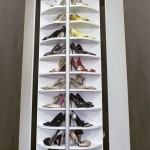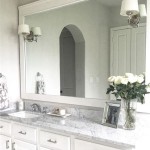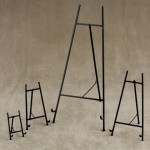The Enduring Appeal of the Antique Rectangular Mirror
Antique rectangular mirrors represent more than just a reflective surface; they serve as historical artifacts, design statements, and investments. Their enduring appeal stems from a combination of factors, including their aesthetic versatility, the craftsmanship inherent in their creation, and the stories they hold within their aged frames and subtly clouded glass. Understanding the nuances of these mirrors, from their construction to their historical context, is crucial for collectors, interior designers, and anyone appreciating the beauty and value of antique furnishings.
The rectangular shape, in its simplicity and geometry, has been a consistent element in mirror design throughout history. This prevalence is due, in part, to its practicality. A rectangle maximizes the reflective surface area within a given frame size, offering a wider and more useful reflection than other shapes might. Furthermore, the straight lines of a rectangular mirror complement a wide range of architectural styles, from the ornate detailing of Victorian homes to the clean lines of Mid-Century Modern interiors.
The intrinsic value of an antique rectangular mirror is determined by several interconnected elements: its age, origin, maker (if identifiable), materials, condition, and aesthetic appeal. A piece dating back to the 18th century, crafted from rare woods, and retaining most of its original features will naturally command a higher price than a more recent piece with significant damage or alterations. Appreciating these factors is key to understanding the market for antique mirrors and making informed decisions regarding acquisition and preservation.
Identifying Key Characteristics of Antique Rectangular Mirrors
Accurately identifying and assessing antique rectangular mirrors necessitates a keen eye and a solid understanding of historical design trends and manufacturing techniques. Several characteristics distinguish these pieces and offer clues to their origin, age, and value.
Firstly, the
frame
is a crucial indicator. The material used – whether it’s mahogany, walnut, gilded wood, or even early plastics like Bakelite – provides vital information. The style of the frame, its embellishments, and its construction techniques are equally important. For instance, a mirror with a hand-carved frame featuring acanthus leaves and shell motifs is likely from a different period than one with a streamlined, Art Deco-inspired frame made of chrome or ebonized wood. Look for dovetail joints, mortise and tenon joints, or other traditional woodworking techniques that predate modern mass production. The presence of original gilding, even if faded or worn, adds to the piece's value and authenticity. Careful examination of the frame's corners, edges, and back can reveal signs of age, repairs, or alterations.Secondly, the
mirror glass
itself offers valuable insights. Antique mirror glass often possesses a unique character, exhibiting subtle imperfections, slight distortions, and a characteristic "foxing" or "silvering" – a clouding or spotting effect caused by the degradation of the silvering on the back of the glass over time. These imperfections are not necessarily flaws but rather evidence of the mirror's age and history. Examining the glass under magnification can reveal subtle bubbles or striations, which are indicative of early glassmaking processes. Modern replacement glass will appear much clearer and more uniform than original antique glass. The way the glass is set into the frame, whether it is held in place by glazier's points, wooden wedges, or other traditional methods, can also help determine the mirror's age and authenticity.Thirdly, examining the
backing and construction
of the mirror is essential. The materials used for the back – whether it's wood, cardboard, or a later material – can provide clues about its age and origin. Look for the presence of original labels, stamps, or inscriptions, which can provide valuable information about the maker or retailer. The construction techniques used to assemble the mirror, such as the type of nails or screws used, can also be indicative of its age. The overall stability and condition of the backing are important considerations, as a damaged or deteriorated backing can compromise the integrity of the mirror.Historical Context of Antique Rectangular Mirrors
To fully appreciate an antique rectangular mirror, it’s essential to understand its historical context. Mirrors have evolved significantly over the centuries, reflecting changes in fashion, technology, and social customs.
During the 17th and 18th centuries, mirrors were luxury items primarily owned by the wealthy. These early mirrors were often small and expensive, due to the limitations of glassmaking technology. Rectangular mirrors from this period were typically framed in elaborately carved and gilded wood, reflecting the opulence and grandeur of the Baroque and Rococo styles. They were often incorporated into elaborate console tables or hung above fireplaces, serving as focal points in elegant interiors. The size and quality of a mirror were status symbols, demonstrating the owner's wealth and sophistication.
The 19th century witnessed significant advancements in glassmaking technology, making mirrors more affordable and accessible to a wider range of people. The Industrial Revolution led to mass production techniques, allowing for the creation of larger and more elaborate mirrors at lower costs. Rectangular mirrors from this era reflect the diverse styles of the Victorian period, ranging from the ornate and heavily decorated to the more restrained and classical. Frames were often made of mahogany, walnut, or rosewood, and embellished with carvings, inlays, and gilding. The rise of department stores and mail-order catalogs made it easier for people to acquire mirrors, contributing to their growing popularity in middle-class homes.
The 20th century saw further evolution in mirror design, reflecting the changing aesthetic sensibilities of the modern era. The Art Deco movement of the 1920s and 1930s embraced sleek, geometric forms and luxurious materials, resulting in rectangular mirrors with streamlined frames made of chrome, ebonized wood, or inlaid with exotic veneers. The Mid-Century Modern period of the 1950s and 1960s favored clean lines, minimalist designs, and the use of new materials such as plastic and Formica. Rectangular mirrors from this era often featured simple frames made of wood or metal, emphasizing functionality and practicality. The later decades of the 20th century saw a resurgence of interest in antique and vintage mirrors, as people sought to incorporate unique and characterful pieces into their homes.
Caring for and Preserving Antique Rectangular Mirrors
Proper care and preservation are paramount to maintaining the value and beauty of antique rectangular mirrors. These delicate objects are susceptible to damage from environmental factors, improper handling, and inappropriate cleaning methods. Implementing a proactive approach to conservation will ensure that these historical artifacts can be enjoyed for generations to come.
Firstly,
environmental control
is critical. Avoid placing antique mirrors in areas with high humidity or direct sunlight. Humidity can cause damage to the frame, backing, and silvering on the glass, leading to deterioration and discoloration. Direct sunlight can fade the frame's finish and cause the glass to become brittle. Ideally, mirrors should be displayed in a climate-controlled environment with stable temperature and humidity levels. The ideal relative humidity for preserving antique furniture and mirrors is between 45% and 55%. If humidity levels are consistently too high, consider using a dehumidifier to maintain a stable environment. Avoid placing mirrors near sources of heat, such as radiators or fireplaces, as this can also cause damage to the frame and glass.Secondly,
handling and storage
require caution. When moving or handling an antique mirror, always wear clean gloves to prevent transferring oils and dirt onto the surface. Lift the mirror from the bottom, supporting its weight evenly, and avoid placing pressure on the frame. If you need to store an antique mirror, wrap it carefully in acid-free tissue paper and then in bubble wrap. Store the mirror in a dry, secure location, away from potential damage. Never lean a mirror against a wall for extended periods, as this can put stress on the frame and glass. If possible, store the mirror flat on a padded surface.Thirdly,
cleaning and maintenance
should be approached with utmost care. Never use harsh chemicals, abrasive cleaners, or ammonia-based products on antique mirrors. These can damage the frame's finish and the silvering on the glass. For routine cleaning, gently dust the frame with a soft, dry cloth. To clean the glass, use a solution of distilled water and a small amount of mild dish soap. Apply the solution to a clean, lint-free cloth and gently wipe the glass. Avoid spraying the solution directly onto the mirror, as this can cause it to seep behind the glass and damage the silvering. Dry the glass thoroughly with another clean, lint-free cloth. If the mirror has intricate carvings or delicate details, use a soft brush to remove dust from these areas. For stubborn stains or grime, consult a professional conservator before attempting to clean the mirror yourself.
Bristol Rectangular Antique Mirror Patricia Group

Antique Gold Vintage Rectangular Wall Mirror Kirklands Home

Antique Golden Rectangular Mirror For At Pamono

Luxury Antique Rectangular Champagne Gold Mirror Barrett Castle Lighting

Marlena Antique Mirror Rectangle Pottery Barn

Luxury Antique Rectangular Champagne Gold Mirror Barrett Castle Lighting

Marley Forrest Large Rectangle Antique Gold Leaf Beveled Glass Classic Mirror 46 In H X 32 W 2024 The Home Depot

White Solid Wood Antique Rectangle Wall Mirror 30x42

Yadur Rectangular Mirror Antique Brass Large Nku

Antique Rectangular Mirrors Mirror








